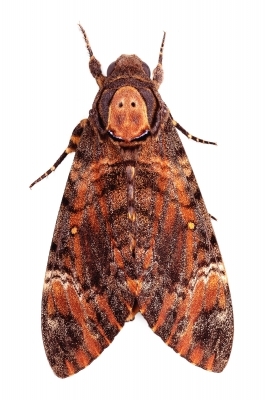It happens to even those who take the utmost care of their beautiful Persian or Oriental rug – moths get to the rug and cause damage.
Read below for tips on how to repair and/or take care of a rug beloved by moths.
- First, you’ll notice that the pests have gotten to your rug because you’ll probably see bald spots or loose or broken pile.
- You also may see moths flying around the carpet, cocoons, larvae in the rug’s pile, or tiny sand-like particles in the pile (these are eggs).
- Understand that moths don’t eat your rug; they lay hundreds of eggs in wool and when the larvae hatch, they are the ones that eat the wool.
- You won’t be able to repair the damage yourself; you’ll need to take your rug to a professional with experience repairing Persian and Oriental rugs. Be prepared: skilled craftsmen aren’t inexpensive and it may cost you a bundle to have the rug’s weave/knots repaired. If the harm is extensive, you may wish to have only the worst spots fixed.
To prevent moths in the future, be sure to vacuum the top of your rug at least weekly and also vacuum the rug’s backside several times a year. Don’t forget the pad and even the floor underneath the rug.
It’s not the winged moths that eat the wool in your Persian rug, it’s the larvae that have just hatched from their eggs.
Mothballs, crystals, and flakes don’t work against moths in rugs. They do act as a minor repellent but they don’t kill the larvae. Plus, the odor of mothballs can be hard to remove from the rug.
Cedar scent also doesn’t prevent moth damage.
If you can’t reach certain areas of the rug (a part that’s under a heavy sofa or the rug is hung on a wall) you can spray it with a non-staining household insecticide that’s made specifically for killing moths. The ingredients in many of these repellents are pyrethrins, which will kill many types of insects. The insecticide breaks down quickly after use, so they are considered safe to use in the home.
Moths also can attack a rug when it’s being stored. To prevent this, follow these steps:
- Make sure the storage area is dry, cool (doesn’t get damp or too hot), and has shades and/or blinds.
- It’s best to roll the rug up for storage.
- Don’t place the rug standing up on a floor. It’s best to lay it on a table, shelf, or counter. If necessary, it’s ok to place it on the floor (just make sure it’s not a concrete floor).
- Roll the rug around a sturdy cardboard tube (your Dallas Persian rug cleaner probably has one you can purchase) and then cover the rug with a sheet of muslin or an old bedsheet.
- The sheet should be long enough that it can be tucked into the “tube” the rug forms when rolled.
- Check the rug every six months for moth and or mildew damage.
Persian Rug Cleaner of Dallas can help you learn how to properly care for your rug. When you want it cleaned, we will wash it by hand (the best way to wash a Persian rug). Contact us at 972-447-9600.
Image courtesy of phasinphoto/FreeDigitalPhotos.net


